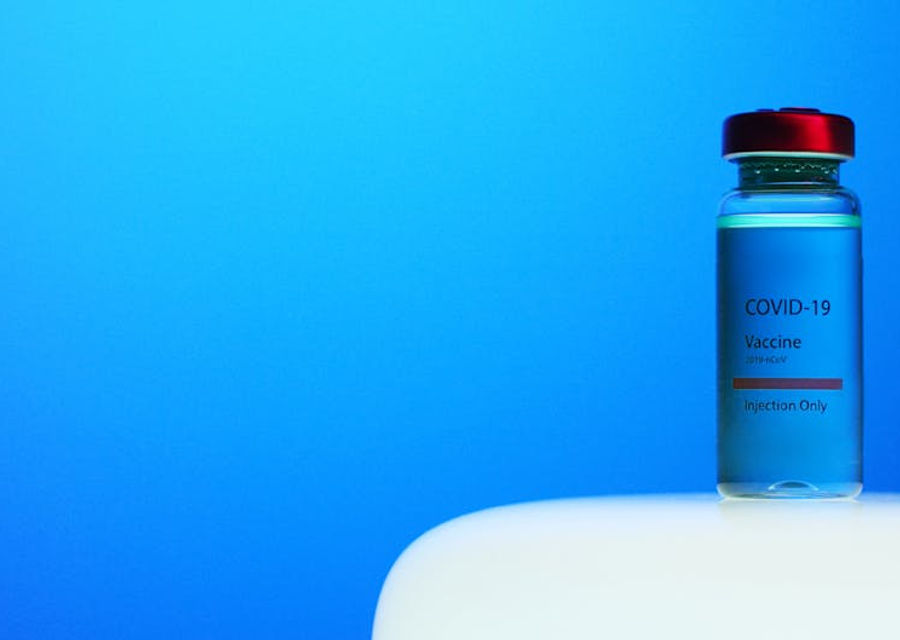Breakthrough: Making Affordable Antiviral Drugs a Reality
- THE MAG POST

- Aug 19
- 7 min read

In an era where viral threats loom large, the pursuit of effective and affordable antiviral treatments has never been more critical. Galidesivir, a promising drug with the potential to combat RNA viruses like Zika and Ebola, offers a beacon of hope. However, its high production cost has hindered its widespread accessibility, posing a significant challenge to global health efforts. Imagine a world where life-saving medications are within reach for everyone, regardless of their socioeconomic status. This vision is now closer to becoming a reality, thanks to the groundbreaking work of a young innovator who has revolutionized the production of galidesivir.
Adam Kovalčík, a 19-year-old chemist, has ingeniously devised a more efficient and cost-effective method for synthesizing galidesivir, potentially slashing its price and making it accessible to millions. His innovative approach involves using corn alcohol, a readily available and inexpensive material, as a base molecule, replacing the traditional sugar-based method. This simple yet profound change streamlines the production process, reducing the number of steps and minimizing waste. Kovalčík's work not only demonstrates the power of youthful ingenuity but also underscores the importance of finding sustainable and affordable solutions to global health challenges, paving the way for a future where antiviral treatments are within reach for all.
In a world grappling with the lingering anxieties of pandemics and the constant threat of emerging viruses, innovative solutions are more critical than ever. A groundbreaking development by a young chemist offers a beacon of hope, promising a more accessible and affordable defense against deadly RNA viruses. This remarkable achievement not only underscores the power of youthful ingenuity but also highlights the potential for transforming lives through scientific advancement.
Revolutionizing Antiviral Treatment with Galidesivir
Imagine a future where potent antiviral medications are readily available, mitigating the impact of viral outbreaks and saving countless lives. This vision is moving closer to reality thanks to the ingenuity of a 19-year-old chemist who has devised a more efficient and cost-effective method for producing galidesivir, a promising antiviral drug. His innovative approach has the potential to democratize access to life-saving treatments, particularly in resource-limited settings.
The Promise of Galidesivir
Galidesivir represents a significant advancement in antiviral therapy, showing efficacy against a range of RNA viruses, including Zika and Ebola. This human-synthesized version of adenosine, a nucleoside crucial for genetic information storage, acts as an inhibitor of the enzyme RNA polymerase, disrupting the replication process of these viruses. By interfering with the virus's ability to clone itself, galidesivir offers a potent defense against viral infections, potentially increasing survival rates and reducing the severity of symptoms.
While the body naturally produces adenosine to combat RNA viruses, it often requires a boost when faced with aggressive pathogens like Ebola and Zika. Galidesivir steps in to provide this needed support, enhancing the body's natural defenses and offering a targeted approach to combat viral replication. Its potential to increase survival rates and minimize side effects makes it a promising candidate for treating a variety of viral infections, including COVID-19, offering a much-needed weapon in the fight against emerging viral threats.
Addressing the Cost Barrier of Antiviral Medications
Despite its promise, the high production cost of galidesivir has been a significant obstacle to its widespread use. At approximately $75 per gram, the cost of a full course of treatment would be prohibitively expensive for many patients, particularly in regions with limited healthcare resources. This economic barrier has hindered the accessibility of this potentially life-saving drug, underscoring the urgent need for more affordable production methods.
Recognizing this critical challenge, young Adam Kovalčík set out to revolutionize the production process, aiming to significantly reduce the cost of galidesivir and make it accessible to a broader population. His innovative approach, which leverages readily available and inexpensive materials, has the potential to dramatically lower the price of the drug, paving the way for its widespread use and saving countless lives. By addressing the cost barrier, Kovalčík's work promises to transform the landscape of antiviral treatment, bringing hope to those most vulnerable to viral infections.
The Ingenious Chemistry Behind Affordable Galidesivir
The quest for affordable medicines often hinges on innovative approaches to synthesis. Adam Kovalčík's breakthrough in reducing the cost of galidesivir production exemplifies this principle. By rethinking the traditional manufacturing process, he has unlocked a more efficient and economical pathway to this life-saving drug, demonstrating the power of ingenuity in addressing critical healthcare challenges.
From Perfume Ingredients to Antiviral Breakthrough
Drawing inspiration from an unexpected source, Kovalčík leveraged his experience with perfume chemistry to identify a more suitable starting molecule for galidesivir synthesis. Instead of relying on sugar, the conventional starting material, he turned to furfural alcohol, a compound derived from corncobs and husks, which is commonly used in the fragrance industry. This seemingly unconventional choice proved to be a game-changer, streamlining the production process and significantly reducing costs.
By substituting sugar with corn alcohol, Kovalčík was able to bypass several complex and expensive steps in the traditional galidesivir synthesis. This innovative approach not only simplified the manufacturing process but also reduced the reliance on costly reagents and specialized equipment. The result was a more efficient and economical production method that could potentially lower the cost of galidesivir to around $12.50 per gram, making it far more accessible to patients in need.
Streamlining Production for Maximum Efficiency
The key to Kovalčík's cost-saving innovation lies in his ability to reduce the number of steps required to synthesize galidesivir. The traditional method involves a complex 15-step process, which contributes significantly to the overall cost of production. By using corn alcohol as the starting molecule, Kovalčík was able to streamline the process, reducing it to just 10 steps. This simplification not only lowers the cost but also increases the efficiency of the synthesis, making it a more scalable and sustainable approach.
Furthermore, Kovalčík's method addresses the challenge of stereoisomers, which are unwanted variants of the drug that can complicate the purification process. By selectively synthesizing the more potent cis-OH form of galidesivir, he minimizes the need for costly separation steps, further contributing to the overall cost reduction. This targeted approach ensures that the final product is of the highest quality and potency, while also minimizing waste and maximizing efficiency.
Expanding the Horizon of Antiviral Research
The implications of Kovalčík's work extend beyond galidesivir, opening up new avenues for antiviral drug discovery. His innovative approach to molecular design and synthesis has the potential to revolutionize the development of new treatments for a wide range of viral infections. By leveraging the power of computer modeling and readily available materials, he is paving the way for a future where antiviral medications are more accessible, affordable, and effective.
Designing Novel Antivirals with Computer Modeling
Kovalčík's expertise in computer modeling has enabled him to design novel molecules with the potential to be even more effective than galidesivir. One such molecule, ADK-98, shows promising results in preliminary studies, suggesting that it could offer a more potent defense against RNA viruses. By using computer simulations to predict the behavior of these molecules, Kovalčík can optimize their structure and function, increasing their chances of success in clinical trials.
The use of computer modeling in drug discovery represents a paradigm shift in the pharmaceutical industry, allowing researchers to accelerate the development process and reduce the reliance on costly and time-consuming experiments. By leveraging the power of computational tools, Kovalčík is able to explore a vast chemical space, identifying promising drug candidates with greater efficiency and precision. This approach has the potential to revolutionize the way antiviral medications are discovered and developed, leading to more effective treatments for a wide range of viral infections.
Furfural Alcohol: A Versatile Building Block for Future Antivirals
The versatility of furfural alcohol as a starting material for antiviral synthesis makes it a valuable asset in the fight against emerging viral threats. Kovalčík's work demonstrates that this readily available compound can be used to create a variety of antiviral molecules, each with its own unique properties and potential applications. By exploring the chemical space around furfural alcohol, researchers can unlock a treasure trove of new antiviral agents, offering a diverse arsenal against viral infections.
Furthermore, the sustainable nature of furfural alcohol, which is derived from agricultural waste, makes it an attractive alternative to traditional starting materials. By utilizing this renewable resource, Kovalčík's approach aligns with the principles of green chemistry, minimizing the environmental impact of drug production. This commitment to sustainability not only benefits the planet but also ensures the long-term availability of this valuable building block for future antiviral research.
The Future of Kovalčík's Antiviral Research
Adam Kovalčík's journey is far from over. With ongoing research and development efforts in collaboration with the Slovak University of Technology in Bratislava, he is poised to make even greater contributions to the field of antiviral medicine. His dedication, ingenuity, and commitment to affordability promise to transform the landscape of viral disease treatment, offering hope to millions around the world.
Collaborating for Continued Innovation
The partnership between Kovalčík and the Slovak University of Technology provides a fertile ground for continued innovation in antiviral research. By combining Kovalčík's youthful enthusiasm and creativity with the university's established expertise and resources, they can accelerate the development process and bring new antiviral treatments to market more quickly. This collaborative approach fosters a dynamic environment where ideas can be exchanged, challenges can be overcome, and breakthroughs can be achieved.
Furthermore, the university's state-of-the-art facilities and equipment provide Kovalčík with the tools he needs to refine his research and development process. From advanced computer modeling software to sophisticated chemical synthesis equipment, he has access to the resources necessary to push the boundaries of antiviral discovery. This combination of talent, resources, and collaboration creates a powerful synergy that promises to yield significant advancements in the fight against viral diseases.
A Spritz of Inspiration
Kovalčík's story serves as a reminder that inspiration can come from the most unexpected places. His breakthrough in antiviral drug synthesis was sparked by a seemingly unrelated experience with perfume chemistry, highlighting the importance of cross-disciplinary thinking and the power of connecting seemingly disparate ideas. This ability to draw inspiration from diverse sources is a hallmark of innovative thinkers and a key ingredient in scientific discovery.
So, the next time you encounter a seemingly unrelated piece of information or experience, remember Kovalčík's story and consider the potential connections it may hold. You never know when a seemingly insignificant detail could spark a groundbreaking idea that has the power to change the world. As Kovalčík himself demonstrated, a spritz of inspiration can be all it takes to unlock a life-saving discovery.
The Ultimate Answer: Affordable Antiviral Drugs
The development of affordable antiviral drugs is not merely a scientific achievement; it is a humanitarian imperative. By making these life-saving treatments accessible to all, regardless of their socioeconomic status, we can protect vulnerable populations, mitigate the impact of viral outbreaks, and build a healthier and more equitable world. Adam Kovalčík's work represents a significant step towards this goal, offering a beacon of hope in the fight against viral diseases.
Aspect | Traditional Method | Kovalčík's Innovation |
Starting Material | Sugar | Corn Alcohol |
Production Steps | 15 | 10 |
Cost per Gram of Galidesivir | $75 | $12.50 |
Key Benefit | Established process | Significantly reduced cost and increased efficiency |






















































Comments